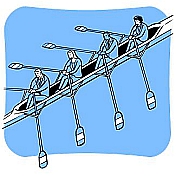Key aspects in managing procurement team performance
 The wisdom of managing procurement teams has always been one of the most important yet complicated aspects of team management. “How to discover the highest level of team performance?”, “Where and how teams work best?”, “How to improve collaboration effectiveness?” are a few major issues that most senior procurement officers and managers try to resolve.
The wisdom of managing procurement teams has always been one of the most important yet complicated aspects of team management. “How to discover the highest level of team performance?”, “Where and how teams work best?”, “How to improve collaboration effectiveness?” are a few major issues that most senior procurement officers and managers try to resolve.
Organizing a high-performing cross-functional team in procurement department is about undertaking an integrated process that can be controlled by considering the following key aspects:
- Communications
- Commitment and trust
- Collaboration
- Motivation and leadership
- Training and improvement
Communications
The wisdom of teams is hidden behind the means professionals can communicate by. Members of an effective procurement team cooperate frequently with each other and also communicate clearly and consistently with people outside the team regarding vendor management and teamwork.
Effective internal communications allow making right decisions, handling conflict constructively, and giving valuable feedback. Just like in virtual teams, in procurement teams every participant has a certain role, and despite differences in the procurement roles, team members feel a sense of partnership with each other. They can reach true consensus when make and receive reasonable purchasing bids.
Commitment and trust
The members of purchasing team often see themselves belonging to the entire team. They are committed to achieving the shared goals despite their personal agendas.
They should trust each other and have faith in group commitments in order to maintain confidences, support each other, and generally behave predictably and consistently while undertaking the purchasing activities and keeping to the characteristics of effective teamwork.
Collaboration
A procurement team understands how they fit into the overall business activities of their company. Team members know their roles and feel a sense of belonging to a group. They can also see how they personally contribute to the success of teamwork and group achievements by making collaborative effort.
High-performing procuring groups have collaboration tools they can use when needed. Collaboration tools would include:
- Task management
- Conflict and problem solving
- Activity planning and scheduling techniques
- Regular meetings and conferences
- Process improvement techniques
Motivation and leadership
Group motivation and leadership are the major building blocks to team success. Vendor purchasing activities will be organized in the best way and performance of cross-functional teams will be growing if the managers motivate and commit team members to performance goals and collaborative efforts.
For example, they can provide rewards, remuneration, and special benefits.
Training and improvement
The purpose of improvement efforts and training activities is to develop the discipline of teams and commit them to performance goals. Through continuous improvement processes and training, a “win-win” situation for both vendors and buyers can be achieved.
Supply management activities will be maintained by developing and following long-term staff training strategies and strategic sourcing initiatives, as well as by treating team management and team building methodologies and procurement related issues.













